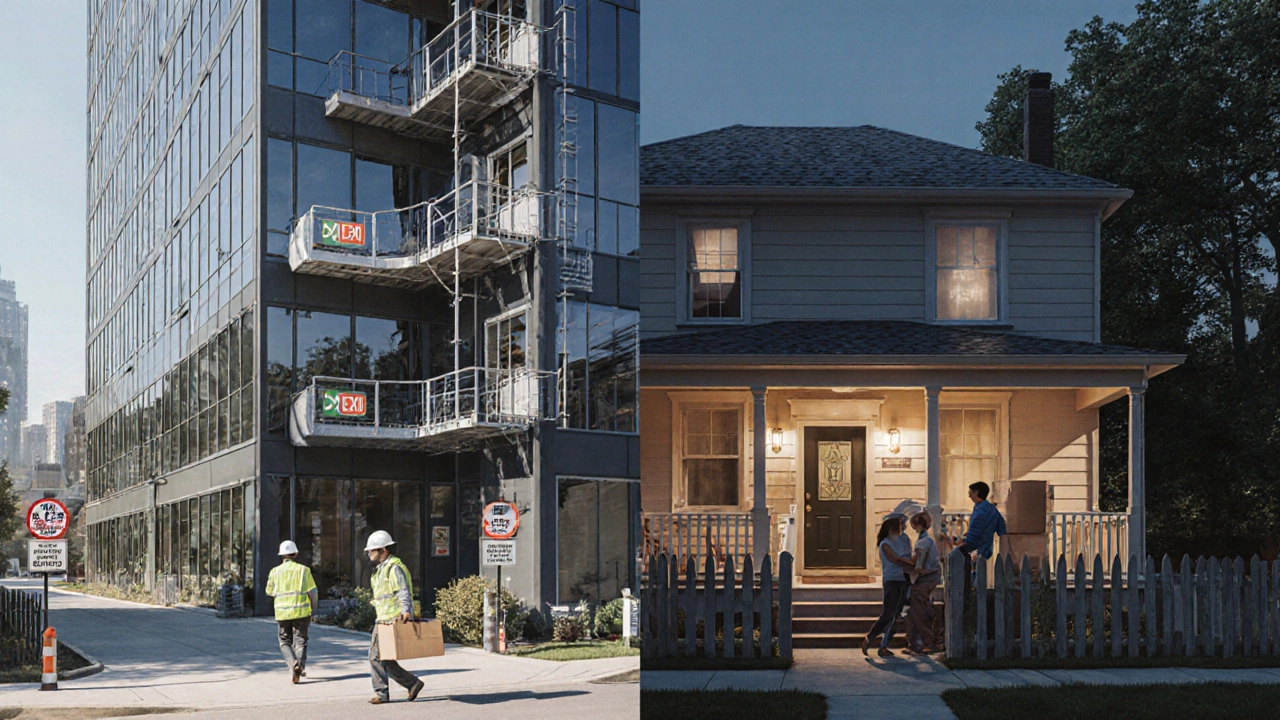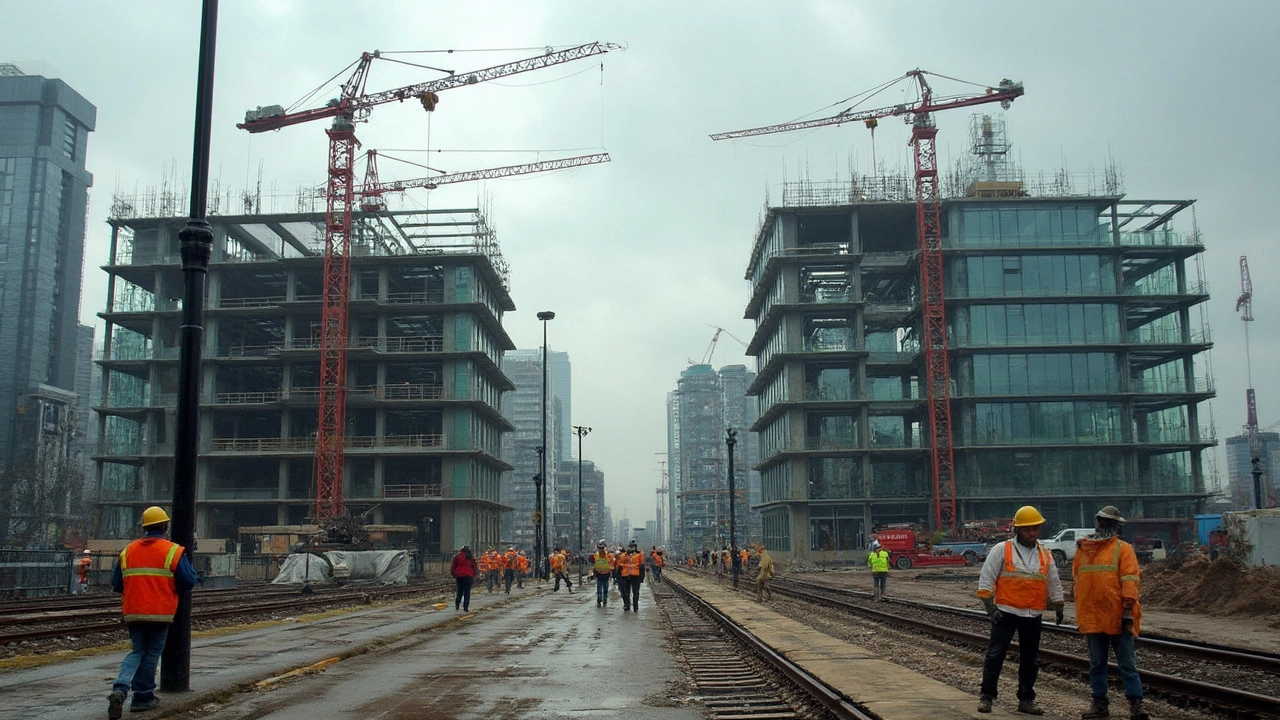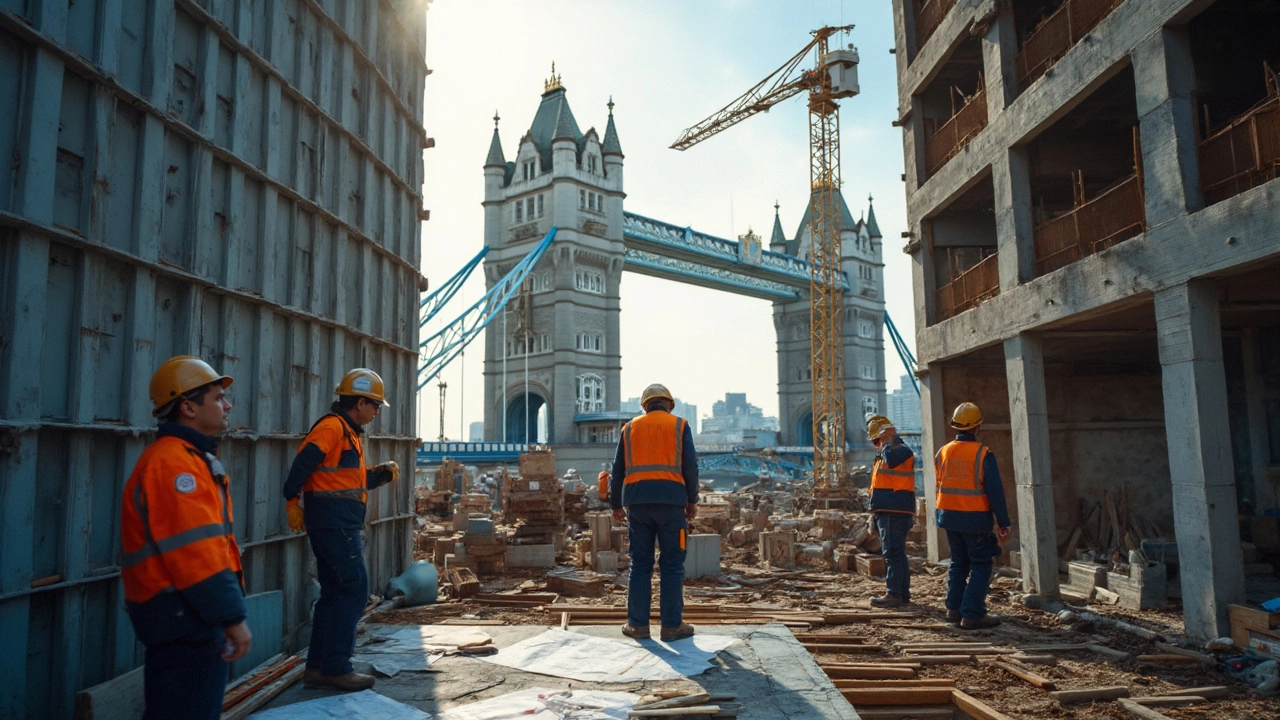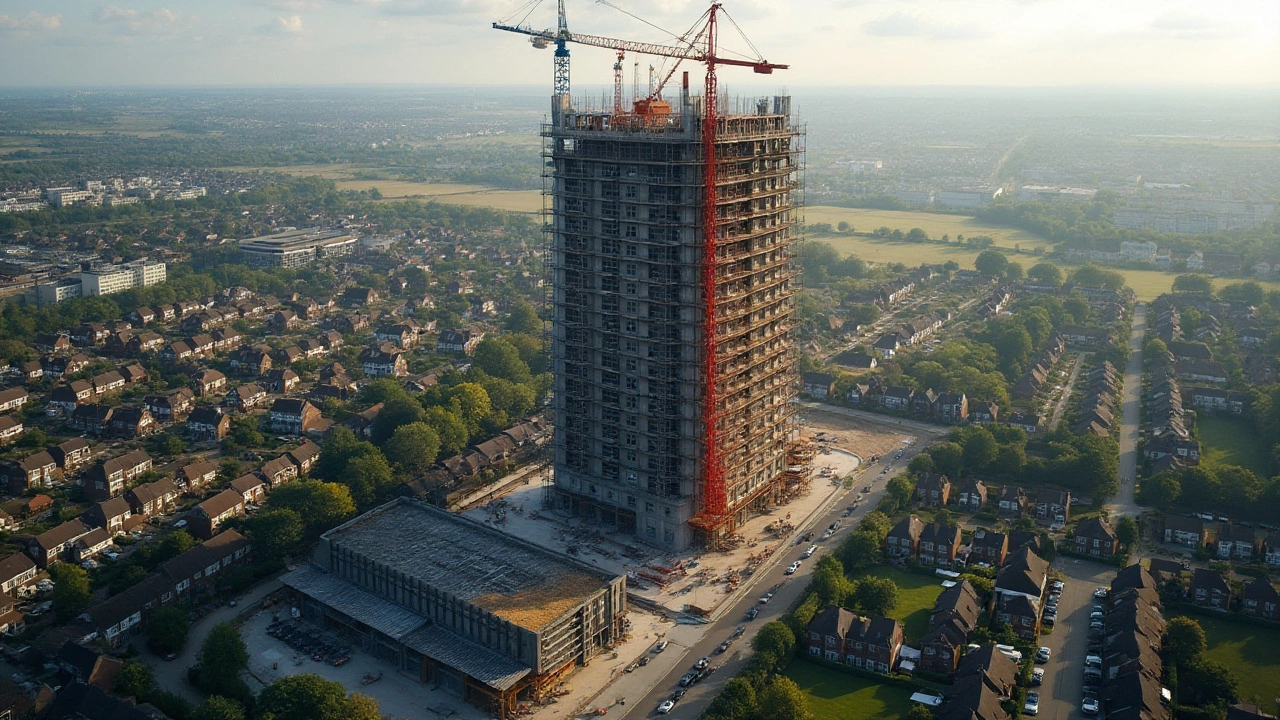Building Types: What You Need to Know Before You Build
If you’re planning a new home, an office block, or a renovation, the first question is "what kind of building am I dealing with?" The answer shapes everything – from the flooring you choose to the way you handle moisture and structural stress. In this guide we break down the most common building types, the quirks each brings, and how to avoid typical headaches.
Choosing the Right Building Type for Your Project
Residential buildings cover everything from a detached house to an apartment tower. They usually prioritize comfort, insulation and aesthetic design. Commercial spaces – shops, restaurants, offices – focus on durability, foot traffic flow and compliance with business codes. Industrial buildings, like warehouses or factories, need heavy‑duty floors, high ceilings and robust fire safety.
Each type demands a different set of materials. For example, a single‑family home often benefits from engineered hardwood or luxury vinyl plank flooring, while a warehouse may require concrete or steel decking to bear loads. Picking the right type early saves you time and money later, especially when you’re budgeting for things like roof replacement or foundation work.
Common Problems Across Building Types
Mold isn’t just a horror‑movie cliché; it shows up in new build homes, old apartments and even commercial offices if moisture isn’t managed. Look for musty smells, visible spots or unexplained allergies – those are signs you need to act fast. Proper ventilation, quality damp‑proofing and regular inspections keep mold at bay.
Foundations are another universal worry. Cracks in walls, doors that won’t close, or uneven floors often point to foundation movement. Whether you own a bungalow or a high‑rise, early detection and professional repair – like underpinning or piering – protect the structure for years.
Roofs can become expensive surprises. A $30,000 quote might be justified for a large commercial building with complex geometry, but it’s worth checking for hidden fees or unnecessary upgrades. Ask for a detailed breakdown, compare material options, and explore financing plans that fit your cash flow.
When it comes to interior style, timeless choices like classic colour palettes and simple lines work for both homes and offices. Trends come and go, but a solid base lets you swap in new décor without a full overhaul. This approach also helps you stay within budget while still keeping the space fresh.
Storage hacks work everywhere. Built‑in shelves, hidden compartments and multi‑purpose furniture free up space in cramped apartments and busy commercial break rooms alike. A tidy environment reduces stress and makes cleaning easier – a win‑win for any building type.
Finally, don’t overlook the legal side. Commercial projects often require different permits, fire safety checks and accessibility standards than residential builds. Skipping these steps can delay your timeline and add unexpected costs.
Bottom line: knowing the strengths and weak points of each building type lets you make smarter design choices, sidestep common issues, and keep your project on track. Use this guide as a checklist before you sign contracts, order materials, or start the first demolition. The right groundwork today prevents costly fixes tomorrow.
Commercial vs Residential Construction: Which Is Better for Your Project?
- Gavin Whitaker
- |
- |
- 0
Commercial and residential construction serve very different purposes. Learn the key differences in cost, timeline, financing, and risk to decide which type of building is better for your goals.
View moreIndustrial and Commercial Construction: Are They Really the Same?
- Gavin Whitaker
- |
- |
- 0
Ever wondered if industrial and commercial construction are just two names for the same thing? This article digs into what actually separates these two huge pieces of the construction world. You'll find out how their projects, needs, and even teams can be very different. Plus, there are helpful tips for anyone thinking about a new building or trying to pick the right contractor. Get ready for some real talk that clears up the confusion.
View moreCommercial vs Non-Commercial: What Sets Them Apart in Construction?
- Gavin Whitaker
- |
- |
- 0
This article breaks down the real differences between commercial and non-commercial buildings in the world of construction. You'll find out what makes a project count as commercial, how regulations and codes change based on the type, and why these differences matter for contractors and owners. We've included facts about zoning, permits, and costs, along with tips for handling the main challenges on each side. Let’s clear up the gray areas and make sense of where your project lands.
View moreWhat Type of Construction Dominates Commercial Buildings?
- Gavin Whitaker
- |
- |
- 0
Ever wondered what kind of construction methods stand behind the towering buildings in our cities? Discover the most common types of constructions used for commercial buildings, from towering skyscrapers to sprawling shopping centers. Understand the materials, techniques, and architectural styles that mold our urban landscapes. If you're curious about what makes commercial buildings stand tall and sturdy, this is your guide.
View moreUnderstanding Type D Construction: Essentials You Need to Know
- Gavin Whitaker
- |
- |
- 0
Type D construction is a classification that specifies particular standards and materials used in building structures. It's critical for engineers and architects in the commercial sector to distinguish Type D from other classifications for proper design and safety compliance. Understanding the nuances of Type D can mean the difference between a successful project and costly mistakes. Familiarize yourself with its defining characteristics, where it's most applicable, and some tips for optimizing your projects.
View moreComparing Commercial and Residential Construction Projects: Key Differences Explained
- Gavin Whitaker
- |
- |
- 0
This article delves into the differences between commercial and residential construction projects, highlighting distinctive factors in scope, design, materials, and regulations. Understand how each project type caters uniquely to various needs and functions. Gain insights into the pivotal roles of budgeting and scheduling, as well as the crucial element of community impact. Practical tips are also provided for professionals navigating either landscape.
View moreExploring Key Differences Between Commercial and Residential Buildings
- Gavin Whitaker
- |
- |
- 0
Understanding the difference between commercial and residential buildings is crucial for developers, architects, and investors. Commercial buildings are designed for businesses, whereas residential buildings are for homes. The structural design, regulatory requirements, and intended purposes significantly differ between the two. A clear comprehension of these differences aids in making informed decisions in construction planning and development strategies.
View more





